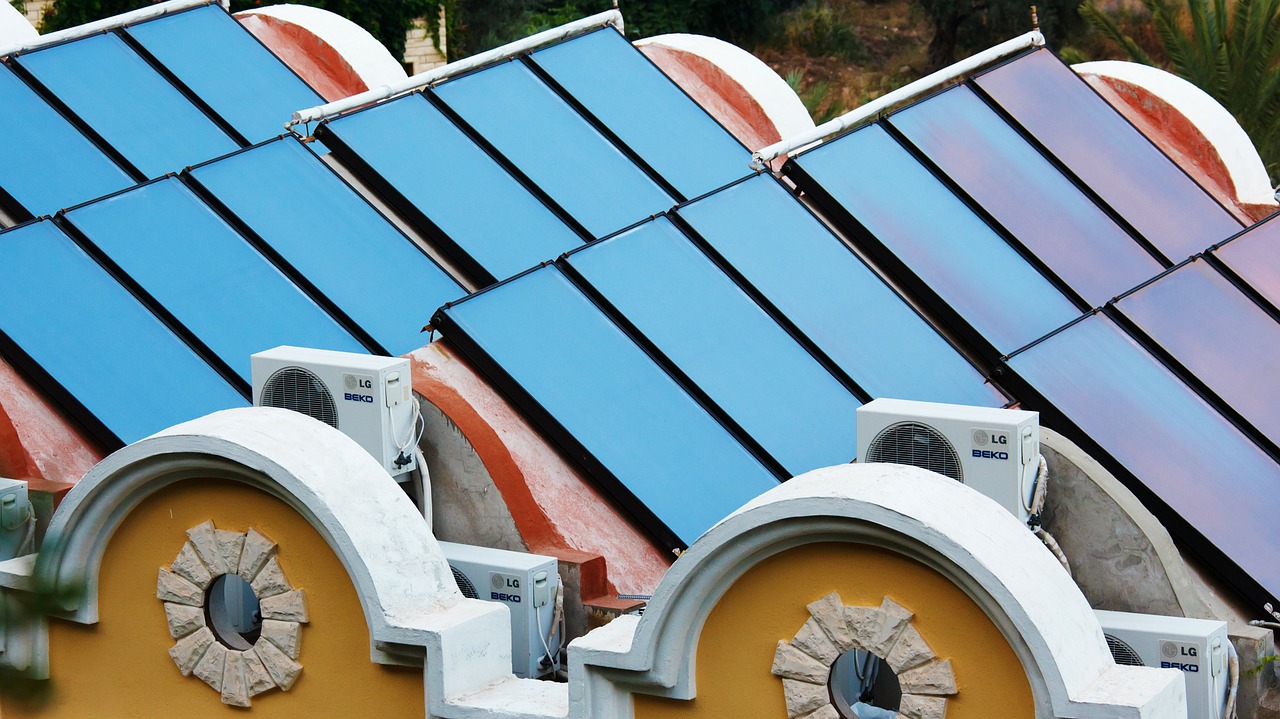Will Solar Remain King?
 The new Tax Cuts and Jobs Act was introduced on November 2, 2017 in the U.S. House of Representatives by the Chairman of the Ways and Means Committee, Texas Representative Brady. After multiple revisions, this major tax reform legislation was signed into law by President Donald Trump on Dec. 22nd, 2017. The new tax law institutes key changes that may drastically affect the fast growing U.S. solar market.
The new Tax Cuts and Jobs Act was introduced on November 2, 2017 in the U.S. House of Representatives by the Chairman of the Ways and Means Committee, Texas Representative Brady. After multiple revisions, this major tax reform legislation was signed into law by President Donald Trump on Dec. 22nd, 2017. The new tax law institutes key changes that may drastically affect the fast growing U.S. solar market.
Analyses have shown that the bill offers two critical changes: the corporate tax rate reduction; and first year full depreciation tax write-off of equipment placed after September 27, 2017. From the perspective of a solar investor, these changes provide even more favorable terms, which would spill over to the overall solar market activity.
The decrease of the corporate tax rate from 35 percent down to 21 percent has a paramount effect on the economy by altering the flow and value of goods and services. Fundamental market behavioral changes are expected from the magnitude of these tax cuts. 100 percent bonus depreciation will make infrastructure investments more attractive due to the increased time-value of immediate tax write-off benefits. From a preliminary assessment of supply and demand, we can predict the following outcomes:
Total tax partnership investments from corporations will decrease in the short-run. A tax equity investor, first and foremost, evaluates a project based on strictly the tax benefits. Therefore, when the corporate tax rate falls from 35 percent to 21 percent, the overall tax benefits from depreciable and tax credit eligible assets like solar equipment would decrease substantially by 40 percent. The sensitivity of even a slight tax rate decrease will impact the tax equity market. This will make these tax-advantaged investments far less economically attractive as a vehicle for corporate tax optimization, which has traditionally pushed effective corporate tax rates down towards 15-22 percent. Now, those projected renewable energy investments earmarked for 2018 may be at risk and will be contingent on core business performance.
Infrastructure projects will go small. While the larger corporate tax equity retreats, the smaller tax equities will play a larger role in  helping finance infrastructure in 2018 and beyond. 100% bonus depreciation of equipment and the trend towards smaller tax equity appetite will lead to a greater demand for smaller projects. Non-corporate profits are less easily syndicated than corporate profits. Therefore, any un-pooled source of tax liability is better matched with smaller and less-costlier infrastructure projects while barriers for establishing additional syndicate funds are still very high. We can assume that this move towards 100 percent bonus depreciation will counteract the need for syndication to achieve bigger scale projects - making smaller projects efficient on their own in achieving economic objectives.
helping finance infrastructure in 2018 and beyond. 100% bonus depreciation of equipment and the trend towards smaller tax equity appetite will lead to a greater demand for smaller projects. Non-corporate profits are less easily syndicated than corporate profits. Therefore, any un-pooled source of tax liability is better matched with smaller and less-costlier infrastructure projects while barriers for establishing additional syndicate funds are still very high. We can assume that this move towards 100 percent bonus depreciation will counteract the need for syndication to achieve bigger scale projects - making smaller projects efficient on their own in achieving economic objectives.
Solar projects: smaller but more of it. Solar projects are unique because they generate investment tax credits in addition to the 100 percent bonus depreciation. When the two mechanisms interact, the size of an ideal project for any given tax liability is reduced even further, resulting in system sizes and costs 60-80 percent of the current market's. This means that solar project developers should position themselves for smaller projects, as those will be better fit to serve the needs of the new market equilibrium between finance and customer demand. This will be the best opportunity for growth as the inflows and outflows of new and old tax equity investors create price discovery opportunities in the market.
 Projects with tax credits will be the most attractive investments for offsetting tax liabilities. Tax benefits of depreciation and tax credits are fundamentally different in how they translate to tax benefits. Noting the differences and the subsequent tax reform changes, tax credits will be even more valuable for corporations due to the decrease in corporate tax rate. This means that, dollar for dollar, solar will provide better value for investors than other comparably priced infrastructure projects under the new tax plan.
Projects with tax credits will be the most attractive investments for offsetting tax liabilities. Tax benefits of depreciation and tax credits are fundamentally different in how they translate to tax benefits. Noting the differences and the subsequent tax reform changes, tax credits will be even more valuable for corporations due to the decrease in corporate tax rate. This means that, dollar for dollar, solar will provide better value for investors than other comparably priced infrastructure projects under the new tax plan.
Fair Market Value will increase in all revenue-generating assets. Broad decline in corporate tax rates is a boon to revenue. Third-party owned solar, which is the most popular vehicle for financing solar projects are long-term revenue generating assets that will appreciate in after-tax value. Passively generated income and long-term energy contracts will appreciate significantly in fair market value by 14 percent or more.
Solar prices will continue to decline 10-15 percent per year, citing improving manufacturing technology and efficiency improvements. While a 15 percent per year cost decrease is more heavily cited in the industry and indicative of the past decade of solar PV technological development, silicon solar wafer cells are closing in on the theoretical maximum (Shockley-Queisser limit) for a single junction solar cell. Significant cost-efficiency gains of solar cells are still expected to increase year-over-year until reaching 29% but only at a slightly lower rate of 10%.
Solar profit margins will increase 25 percent year-over-year, citing combination of cost decline and revenue increase. This is an important macroeconomic boost and reminder for solar businesses given the shock and scare of the recent tariff and tax reforms. Two major macro-economic trends are positive for the solar industry, technology and revenue. Both contribute to lower costs, greater performance and higher after tax revenue that will help steer the industry for at least another decade. If you are in solar, now is not the time to jump ship.
Total solar capacity deployed will experience short-term downward pressure. It's not without doubt that the tax reforms and tariffs present headwinds for the industry. Business relationships will re-shuffle as they always do until the right offer meets the right price. Other factors such as higher operating margins and increased competition will offset, and might even overcome forecasted downturn.
Matt Ji is a Financial Analyst and Asset Manager for O3 Energy. He evaluates the company's project pipeline for economic feasibility and performs due diligence. He assists O3 Energy clients and partners with any financial and technical inquiries. He has extensive research experience in meteorology and artificial neural networks and holds a Master's degree in Renewable Energy Management from the University of Freiburg (Albert-Ludwigs Universitaet Freiburg). He also holds a Bachelor's degree in Petroleum Engineering from the Colorado School of Mines with minors in Economics and Public Policy and is a registered Engineer-in-Training in the State of Colorado. Mr. Ji is a member of O3's editorial team for articles relating to solar industry finance, trends, and predictions.
O3 Energy | o3energy.com
Volume: 2018 March/April











.png?r=4518)